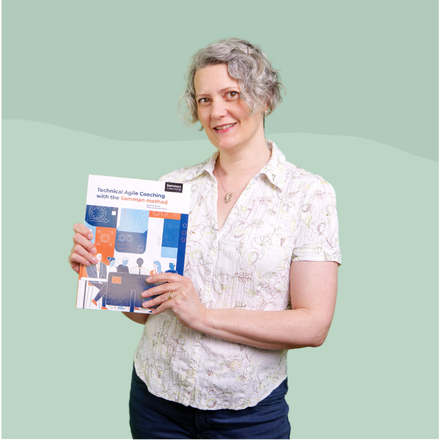I’m at Agile Testing Days this week, and yesterday I attended a tutorial with Lisa Crispin. I’ve never actually met her before, although I have read many of her articles, and the book she wrote together with Janet Gregory, “Agile Testing”. It’s an important book,...
Programmer Conferences are like Games
Why are there so few women programmers? That's a big question. How about a related one that's slightly smaller: Why do so few women go to programmer conferences? Nordic Ruby on Twitter Nordic Ruby was clearly appreciated by many of its attendees. See tweets like this:...
Discussion on TDD at SDC2010
As I mentioned in my last post I chaired a fishbowl discussion at SDC2010 with title "Should a professional developer always use Test Driven Development?". I was delighted that the invited panelists Michael Feathers, Geoff Bache and Andrew Dalke all turned up, along...
First JDojo@Gbg meeting
A little while ago we had the first meeting of our new coding dojo here in Göteborg. We are focussing on learning Test Driven Development using Java and Eclipse. I was very encouraged that two of my colleagues, Fredrik and Martin, volunteered to help organize the...
a new dojo – JDojo@Gbg
I'm planning to start a new dojo this autumn, called JDojo@Gbg. I was inspired by the guys at Responsive in Linköping, who I met at XP2009. They have been running a dojo for some time now, and find it is an excellent way to introduce programmers from their clients to...
europython
I just wrote a report about europython on my company blog.
Programming, History and Bletchley Park
Today at europython we listened to a keynote about Bletchley Park. This was the centre of British and allied codebreaking activities during the second world war, and where the first digital, programmable computer was built, Colossus. We heard about the current...
They learn so fast and they are so cheap
Recently I've had the priviledge of working with a team of developers where I sit in the same room as half of them, and the other half are in China. My role is to help them to develop a suite of automated system tests alongside the production code. After a few month's...
Scandinavian Developers Conference
At the speakers dinner the night before the conference: Ola Bini: "Do you have any actual code examples in your talk about clean code tomorrow?" Me: "No" Ola Bini: "Well, I'm sorry but that means I can't come and listen to it" Not such an auspicious start perhaps, but...
Behaviour Driven Development at agile2008
At agile2008 I attended a session with Dan North about Behaviour Driven Development. Someone on the agile sweden mailing list was asking about it, so I decided to write up my notes here. Most cellphone and computer software is delivered late and over budget. The...

Hi – I´m Emily!
I am an independent consultant with Bache Consulting and chair of the Samman Technical Coaching Society. As a technical coach I work with software development organizations who want to get better at the technical practices needed to be agile, including Test-Driven Development, Refactoring and Incremental Design. I live in Gothenburg, Sweden, although I am originally from the UK. I’ve written two books: “Technical Agile Coaching with the Samman method” and “The Coding Dojo Handbook”. I teach for both O’Reilly and Pluralsight. I’m married to Geoff Bache, creator of TextTest. I am also on Mastodon as emilybache@sw-development-is.social.

If you’d like to know a bit more about me, my work, and the talks and workshops I offer, please visit my main website: EmilyBache.com. There, you’ll find information about my background, upcoming events, and the services I provide as a technical coach and consultant. It’s a good place to start if you’re curious about how I can support your team in improving coding skills and agile practices.

Practical Coaching –
Beyond the Blog
If you’re enjoying the insights shared here on the blog, you might enjoy my training too.
“Technical Agile Coaching with the Samman Method” offers a practical guide to improving how developers collaborate and write code. You’ll learn hands-on techniques for Test-Driven Development, Refactoring, and effective team coaching.
To learn more about the book, just click the link below.
Blog categories



